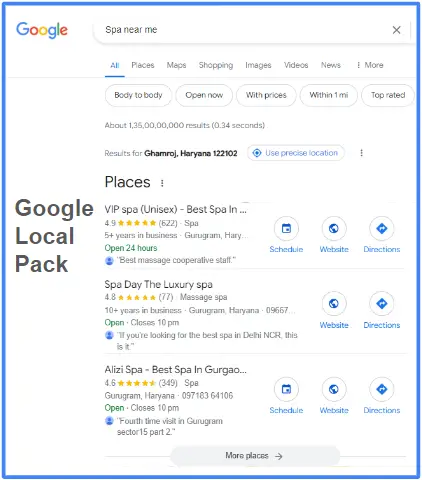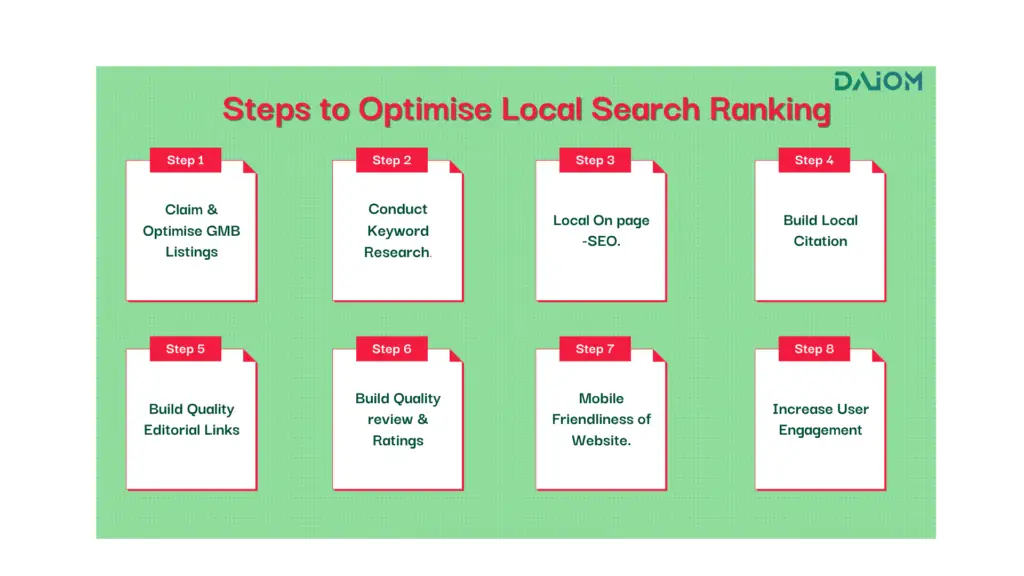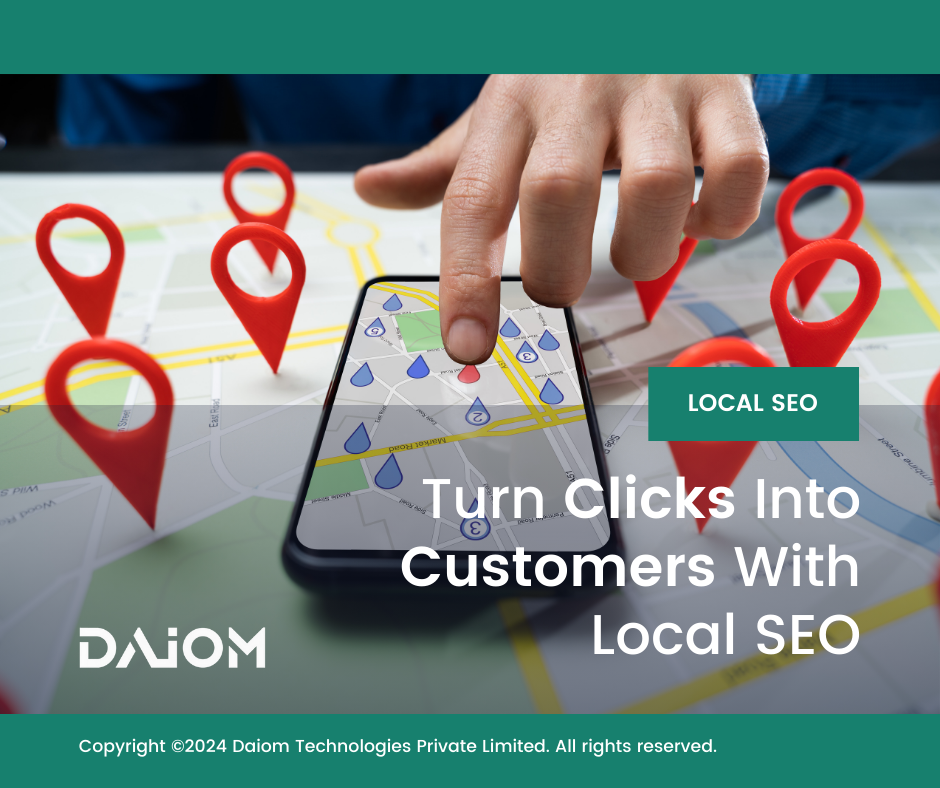Many businesses focus only on paid ads or broad digital marketing but forget that customers today often search for nearby options—whether they plan to shop online or walk into a store.
Even if your business operates offline, your online presence matters more than ever. Without Local SEO, you miss the chance to appear in these important local searches.
The truth is—standing out in organic search is getting harder with rising competition. But Local SEO can help you cut through this noise, naturally attracting high-intent, nearby customers without spending heavily on ads.

If your website isn’t optimized for Local SEO yet, you’re missing out on one of the easiest, most cost-effective ways to boost visibility and sales.
Worldwide searches on Google Maps for “shopping near me” have increased by more than 100% year over year
Table of Contents:
1. Why is Local SEO Needed?
Even with the rise of e-commerce, over 50% of retail sales still occur offline. Digital platforms have transformed offline sales by integrating online visibility with traditional marketing techniques. Now, a business’s online presence is crucial for offline success. People often search for local businesses on Google before making purchases in person. Therefore, local businesses need to appear in Google’s organic search results and the Google Local Pack. This online visibility helps attract more customers and convert online searches into offline sales. Here are the key points to consider:

46% of the searches on Google have local intent the likelihood of that local searches resulting in an in-store visit increases 35%
- It focuses on appearing prominently in localized Google searches, especially with phrases like “near me,” enhancing business visibility and conversion rates.
- Businesses with optimized Local SEO rank highest for local keywords such as “Italian restaurants near me” or “South Indian restaurant in Delhi.”
- Users are more likely to discover those businesses regardless of the industry or location. Optimizing it increases the chances of reaching potential customers through Google searches.
2. What is Local SEO?
Local SEO involves increasing your visibility on Google for local searches, helping you rank in both Google’s organic search results and the Google Local Pack. This is beneficial for businesses with physical stores and local service providers. Any business with a physical location or serving a geographic area can benefit from local SEO.

3. How Does Local SEO Work?
Local SEO operates in two key components. First, it affects Google Organic Search Results, where various factors influence your ranking in standard search results. Second, it encompasses the Google Local Pack, which displays a selection of local businesses relevant to the user’s search query. This combination ensures that businesses can enhance their visibility both in traditional search results and in localised searches, attracting more targeted traffic and potential customers. Here are the factors that collectively influence how businesses rank in both Google Local Pack and organic search results, enhancing visibility and attracting more customers:

- Distance: The proximity between the user’s search location and the business location.
- Relevance: How well the business’s Google My Business (GMB) profile aligns with the user’s search query.
- Prominence: The credibility of the business, as demonstrated through ratings and reviews.
- Web Page Relevance: The degree to which the web page matches the user’s search query.
- Content Quality: The helpfulness and trustworthiness of the content provided.
- Usability: The overall user experience on the website, emphasizing ease of navigation and interaction.

4. Key Factors Influencing Local SEO Rankings in 2024
In 2024, local SEO remains crucial, with 37,000 local searches every second. This survey examines the key factors that local SEO experts consider most important for ranking in both the Google local pack and Google’s organic local results.

5. Steps to Optimise Local Search Ranking
Optimizing local search rankings involves several steps to ensure your business appears prominently in local search results. Here are the key steps to follow:

Step 1 - Claim and Optimise Your Google My Business Listing
Congrats! You’ve decided to claim your business on Google and provide a fully-optimized, robust set of information to your customers and potential customers online. Great move. Here’s how you start the process from your computer or phone:

Optimising factors for GMB Listings
- Business Title – Using a clear and relevant business name helps Google understand what your business offers.
- Categories – Selecting the appropriate categories for your business ensures it appears in relevant search queries.
- Website URL – Linking a website to your Google Business Profile provides additional information to Google and potential customers.
Step 2 - Conduct Keyword Research
Local SEO keywords involve finding terms that people search for locally and are relevant to your business.
These keywords include location modifiers like landmarks, streets, postal codes, towns, cities, countries, or areas.
The Local Keywords can be categorised into two parts –
- Explicit Local Keywords – Specify a location or mention the keyword near me which make it obvious that user is searching for a specific location.

- Implicit Local Keywords – The location specific terms are not included but are related to the local context as user knows that google will understand.
Example –

Local SEO keyword optimisation is important as it helps in:
- Increasing the visibility – By Local SEO keywords website or content is more likely to rank higher in the search results
- Targeted Traffic – Local SEO keywords target the user which is searching in a particular geographical area and having the high intent of making a purchase
- Increased Customer engagement – Optimised website with the local keywords, become more relevant to the local users
Step 3 - Local On-Page SEO
On-page SEO involves optimising your website’s content and structure. Here are key tips:
- NAP Consistency – Ensuring that your business Name, Address, and Phone number (NAP) are consistent across your website.
- Local Content – Creating content focused on your local audience, such as local news, events, or community activities, can boost local search relevance.
- Keywords – Using local keywords in content, meta descriptions, and titles helps search engines identify your business’s location.
Step 4 - Build Local Citations
Citations are online mentions of your business, either structured (e.g., business directories) or unstructured (e.g., blog posts). Consistent and accurate NAP information is crucial.
- Structured Citations: Listings on directories like Facebook and Bing establish your business’s presence and credibility.
- Unstructured Citations: Mentions on blogs and news sites enhance your online footprint and local search rankings.
- Accuracy: Consistent and accurate NAP information across all citations is crucial.
- Distribution: Having your business listed on numerous platforms increases visibility.
- Quality: Listings on authoritative and high-traffic sites are more beneficial.
- Relevance: Citations on industry-specific or local websites add more value.
Step 5 - Build Quality Editorial Links
Building quality editorial links in local SEO involves obtaining backlinks from reputable, relevant websites.
Important Factors to be Considered for Link Building –
- Domain Authority – Links from high-authority domains boost your site’s credibility.
- Page Authority – Links from high-authority pages contribute more to your search rankings.
- Quantity – The number of links pointing to your site matters, but quality shouldn’t be sacrificed for quantity.
- Relevance – Links from sites related to your industry or local area are more valuable.

Step 6 - Build Quality Reviews and Ratings
Reviews significantly influence local search rankings. They provide social proof and help build trust with potential customers.
- Google-Based Reviews – Reviews on your Google Business Profile are high visibility and directly impact your search ranking.
- Third-Party Review Sites – Reviews on sites like Facebook, Bing, etc, and other industry-specific platforms also contribute to your online reputation.
- First-Party Reviews – Reviews collected on your website can influence customer decisions and signal to search engines that your business is active and reputable.

Important Factors to be Considered for Reviews and Ratings
- Recency – Recent reviews show that your business is actively engaging with customers.
- Velocity – A steady flow of new reviews indicates ongoing customer satisfaction.
- Diversity – Reviews across multiple platforms provide a comprehensive view of your business’s reputation.
- Authority – Reviews from recognized reviewers or platforms carry more weight.
- Format – Detailed, text-based reviews are more influential than simple star ratings.
Step 7 - Ensure Your Website is Mobile-Friendly
A mobile-friendly website is crucial. According to Bright Local, 61% of mobile users are more likely to contact a local business if it has a mobile site. Use Google’s Mobile-Friendly Test tool to check your website’s compatibility with mobile devices.
Also Read – Your Ultimate Guide to the Must-Have SEO Tools
Step 8 - Increase the User Engagement
User interactions with your business listing and website that Google tracks and uses to rank local businesses.
- Click-Through Rate (CTR) – The percentage of users who click on your business listing when it appears in search results.
- Dwell Time – How long users stay on your website after clicking through from a search result. Longer dwell times suggest valuable content.
- Clicks to Call – The number of users clicking to call your business from their mobile devices.
- Clicks for Directions – The number of users clicking for directions to your business.
- Clicks to Site – The number of users who click through your website from your business listing.
6. Conclusion
Grasping local SEO is crucial for achieving business success today.
The information outlined above provides a comprehensive understanding of local SEO, its significance, and actionable steps to enhance your local search rankings.
Keep in mind that local SEO requires ongoing attention. Regularly update your business details, engage with customer reviews, and create content aimed at your local audience. By sustaining an active and accurate online presence, you’ll help potential customers easily discover and trust your services.
That’s exactly where DAIOM comes in! Don’t believe us? Reach out and uncover the opportunities yourself!
There is a lot more to cover in our DAIOM – Knowledge Base. So keep yourself updated with our blogs and know more about website optimization and SEO.
Wait, there’s more. Check out Ultimate MarTech Guide For Omni Channel Businesses to take your business to the next level.
Subscribe to our Newsletter.


